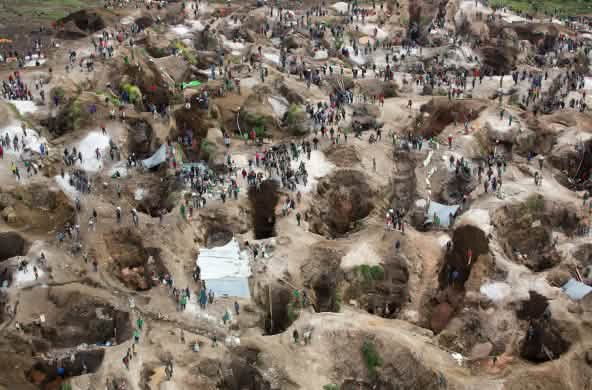Completed campaign
UNESCO sacrifices wildlife preserve for uranium mine
The Selous Game Reserve in Tanzania has been part of the UNESCO World Heritage since 1982. Now the UNESCO has agreed upon a boundary change – and therefore enabled uranium mining in this unique conservation area. Please support the worldwide protest against the decision of the UNESCO
News and updatesTo: Ms Irina Bokova, Director-general of UNESCO, i.bokova@unesco.org
“”Selous is the largest Game Reserve in Africa and is inhabited by the most important populations of the critically endangered wild hunting dogs as well as East African elephants.
The UNESCO describes the Game Reserve as an immense sanctuary of 50,000 km2 which is “relatively undisturbed by human impact” and which is inhabited by “large numbers of elephants, black rhinoceroses, giraffes, hippopotamuses and crocodiles”. The reserve has a “variety of vegetation zones, ranging from dense thickets to open wooded grasslands.”
Nevertheless, the UNESCO has now accepted a boundary change of the Reserve and thus enabled the mining of uranium in the conservation area for supplying nuclear power plants. The planned mine is situated in an elephant corridor between Tanzania and Mozambique.
The UNESCO describes this unbelievable act as a “minor boundary change”. However, this means approximately 200 km2 that will no longer be part of the protected area.
Deadly uranium mining
Soon this unique landscape and biodiversity of could be exposed to an immense quantity radioactive waste. The planned operating time of ten years could lead to the creation of 60 million tons of highly poisonous waste. No safe method exists to avoid contamination of surface and ground water during uranium mining. It remains unclear whether the wind will spread radioactive dust into the Reserve and contaminate wide areas.
Environmental groups accuse the UNESCO of failure and irresponsibility. Their decision appears to be influenced by corporate and lobby interests. Now there is a risk that this case has set a precedent that endangers the protection of other World Heritage sites for similiar interests.
We must not let a World Heritage site be sacrificed. Please support this letter of protest to the UNESCO.
New World Heritage sites are always announced with an especially effective publicity. However, the decision for the boundary change in the Selous Game Reserve was not communicated to the public. Now that the UNESCO has accepted the boundary change, they have made way for a major uranium mine called Mkuju River Uranium Project . It will be owned by Russian ARMZ, a subsidiary of ROSATOM, together with the Canadian company Uranium One.
“Uranium mining is incompatible with World Heritage”
In 2011, the UNESCO announced that „mining activities and dam projects would be incompatible with the status of World Heritage sites“. At the same time, the government of Tanzania announced that they had agreed to a declaration of intent for the construction of a dam in the Rufiji river with a Brasilian Company. The river runs through the center of the Selous Reserve and is supposed to secure the electricity for the planned uranium mining project.
The „Convention Concerning the Protection of the World Cultural and Natural Heritage“ of UNESCO has been ratified by 189 states. The UN runs a list of 962 World Heritage sites, this includes 188 World Natural Heritages, as well as the Selous Game Reserve in Tanzania.
In the areas where uranium mines are active, there have been severe damages to the environment and the health of the local communities. With their decision, the UNESCO is co-responsible for the future destruction of the environment and human life in the Selous Game Reserve.
To: Ms Irina Bokova, Director-general of UNESCO, i.bokova@unesco.org
Dear Ms Bokova,
the UNESCO has approved of a boundary change within the Selous Game Reserve. The decision makes way for a major uranium mine in this unique conservation area. Apparently, millions of tonnes of radioactive waste must be contained safely from the environment for thousands of years. On top of that, uranium mining creates radioactive dust which will be spread with the wind into the Game Reserve. Most likely, rivers and groundwater in the region will be contaminated – for hundreds of years. I ask myself whether the members of the board are fully aware of the consequences.
The decision of the UNESCO appears to be influenced by corporate and lobby interests. Also, there is a high risk that the members of the UNESCO have set a precedent that endangers the protection of other World Heritage sites.
With the approval for the Selous Game Reserve Boundary Change, UNESCO violates their own principles as „protector“ of World Heritage sites and the culture of the indigenous people in East Africa.
I support the appeal of environmental groups who campaign for the withdrawal of the decision and demand the re-establishment of the Selous Game Reserve border defined in 1982.
Furthermore I urge the government of Tanzania to withdraw the approval for uranium mining in close distance to the Selous Game Reserve.
Yours sincerely

